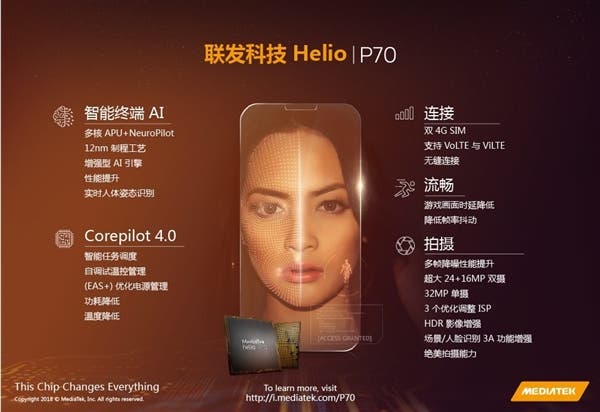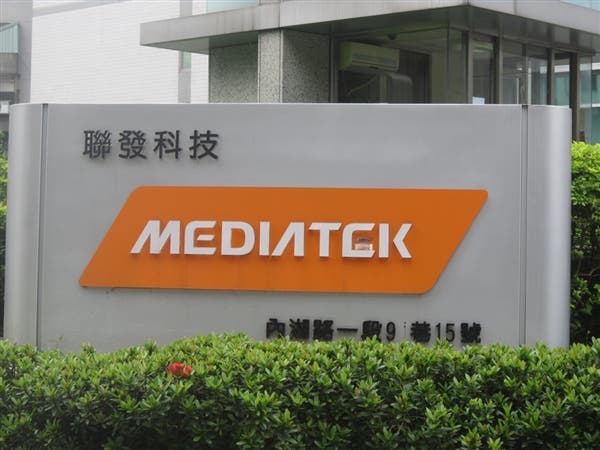Today, on October 24, the MediaTek Helio P70 chip was officially released.
According to the official introduction, the MediaTek Helio P70 adopts TSMC’s latest 12nm FinFET process technology, which uses the architecture of Cortex A73 × 4 + Cortex A53 × 4 and the GPU of ARM Mali-G72. Compared with the previous generation Helio P60, the performance increased by 13%.

The MediaTek Helio P70 provides multi-threaded optimization for games and reduces picture latency for important usage scenarios to provide a faster responsive gaming experience. More importantly, this SoC is equipped with multi-core multi-threaded artificial intelligence processor, combined with MediaTek NeuroPilot and the new intelligent multi-threaded scheduler, which improves AI processing efficiency by 10% to 30% compared with the previous generation Helio P60. This means that even within the same performance range, the Helio P70 can support more complex AI applications such as real-time human attitude detection.
In terms of photography, the MediaTek Helio P70’s new high-resolution depth engine triples the depth of drawing and supports a smoother 24fps depth-of-field preview, featuring 43mph per second. The multi-frame noise reduction improves shooting performance by 20%, and the process from taking photos to converting to JPEG format is way faster. So it is smooth when shooting large numbers of photos continuously.
Other hardware enhancements include a hardware morphing engine for electronic image stabilization that saves 23mA per second compared to the GPU, while the anti-halo engine prevents over-sensing, and it sports a better 3A (automatic exposure, autofocus, and auto white balance), an accurate artificial intelligence face detection, and an intelligent scene recognition.
On the network side, the MediaTek Helio P70 is equipped with the latest technology of 4K LTE modem to support any common VoLTE and ViLTE mobile network connection. Compared with traditional calls, VoLTE and ViLTE provide a great experience, not only shortening the call setup time but also greatly improving the call quality. With the advantages of dual 4G LTE, the second SIM card has the advantages of fast data connection, wide coverage, and low power consumption.





